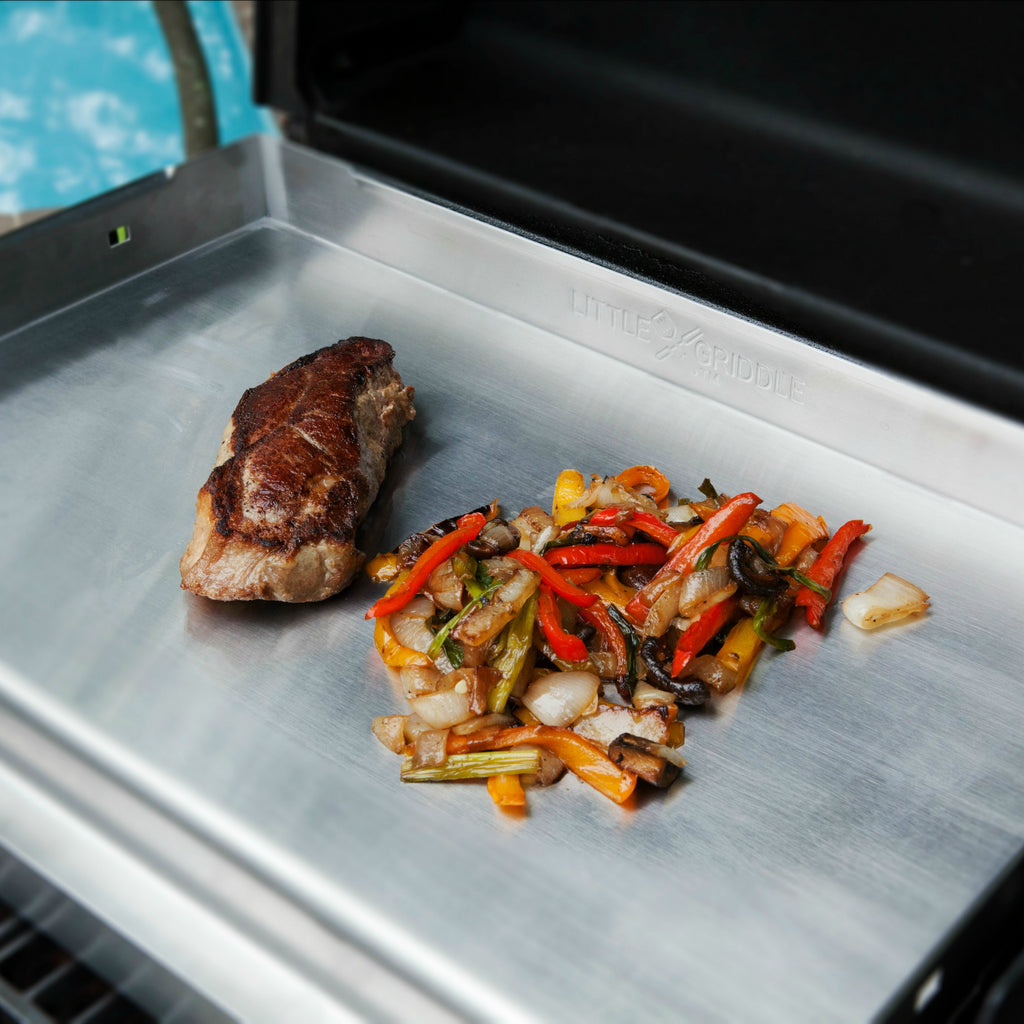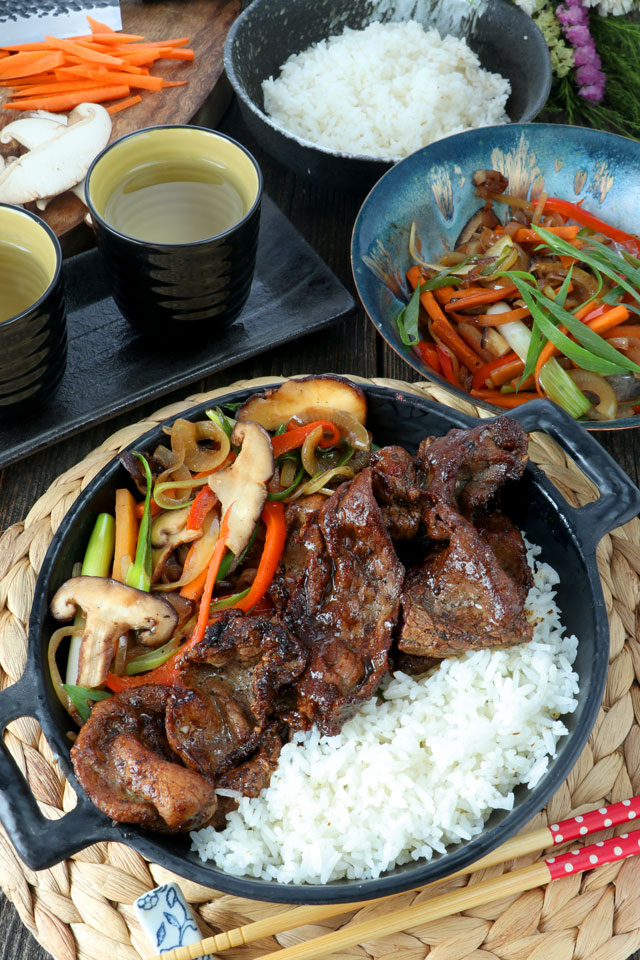Teppanyaki
鉄板焼き
Teppanyaki , often called hibachi (火鉢, "fire bowl") in the United States and Canada, is a post-World War II style of Japanese cuisine that uses an iron griddle to cook food. The word teppanyaki is derived from teppan (鉄板), the metal plate on which it is cooked, and yaki (焼き), which means grilled, broiled, or pan-fried. In Japan, teppanyaki refers to dishes cooked using a teppan, including steak, shrimp, okonomiyaki, yakisoba, and monjayaki. Teppan are typically propane-heated, flat-surfaced, and are widely used to cook food in front of guests at restaurants. They are commonly confused with the hibachi barbecue grill, which is called shichirin in Japanese, and has a charcoal or gas flame and is made with an open grate design. With a solid griddle-type cook surface, the teppan is capable of cooking small or semisolid ingredients such as rice, egg and finely chopped vegetables.
Source: Wikipedia
Recipes

Recipe Idea: Teppanyaki Steak and Garlic-Seared Vegetables – Little Griddle

:max_bytes(150000):strip_icc()/GettyImages-593682594-5841427c5f9b5851e5a8b53e.jpg)




